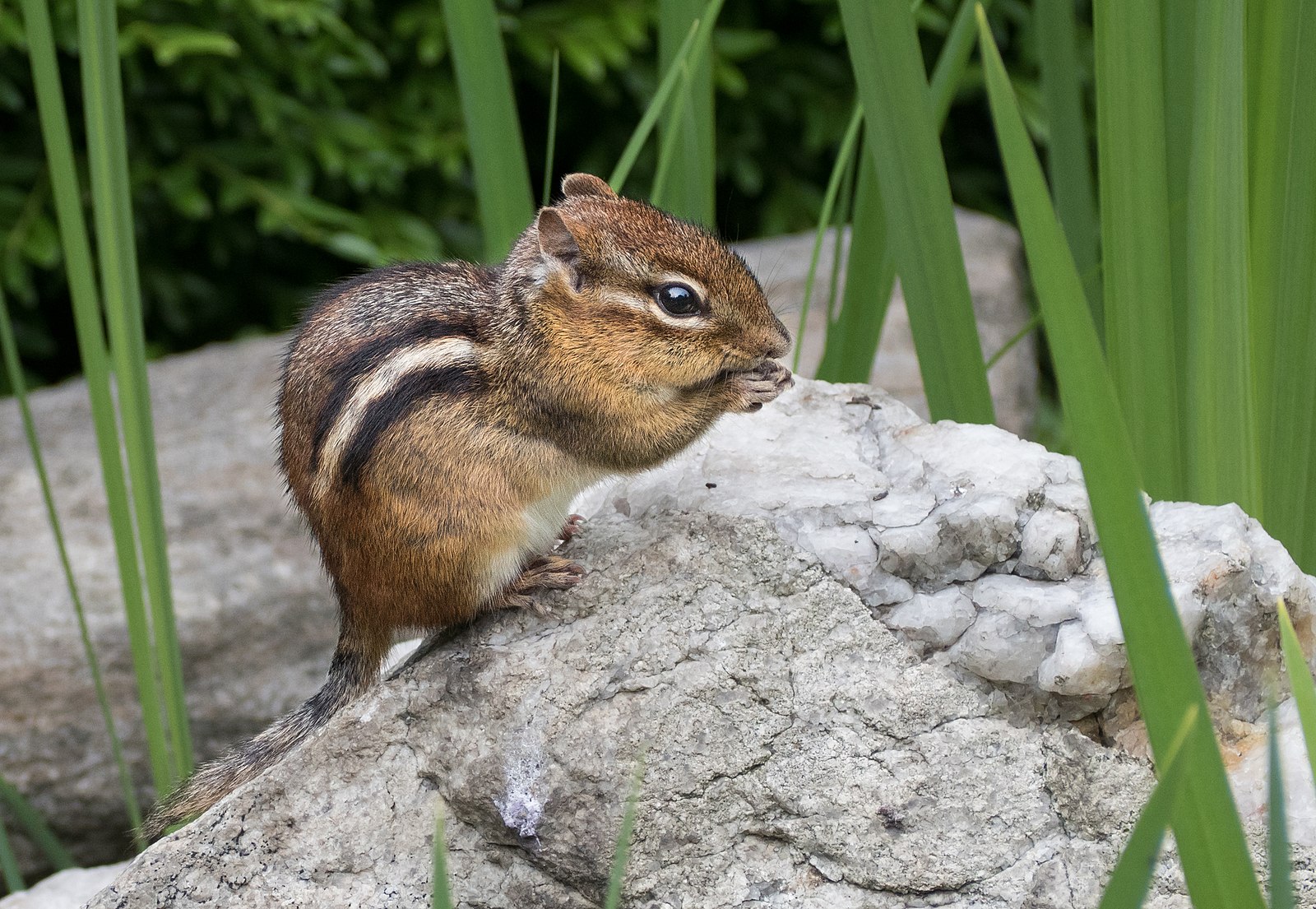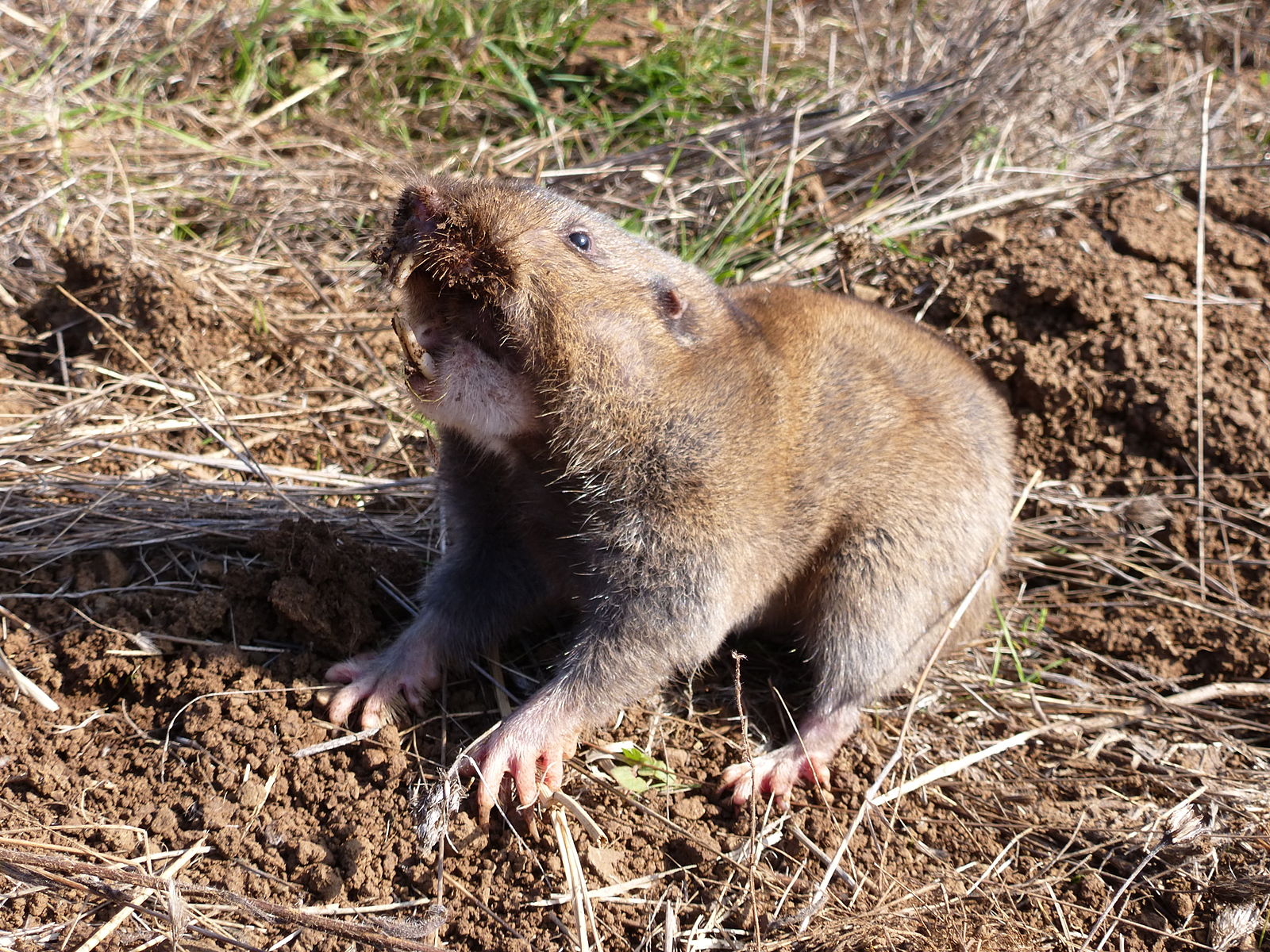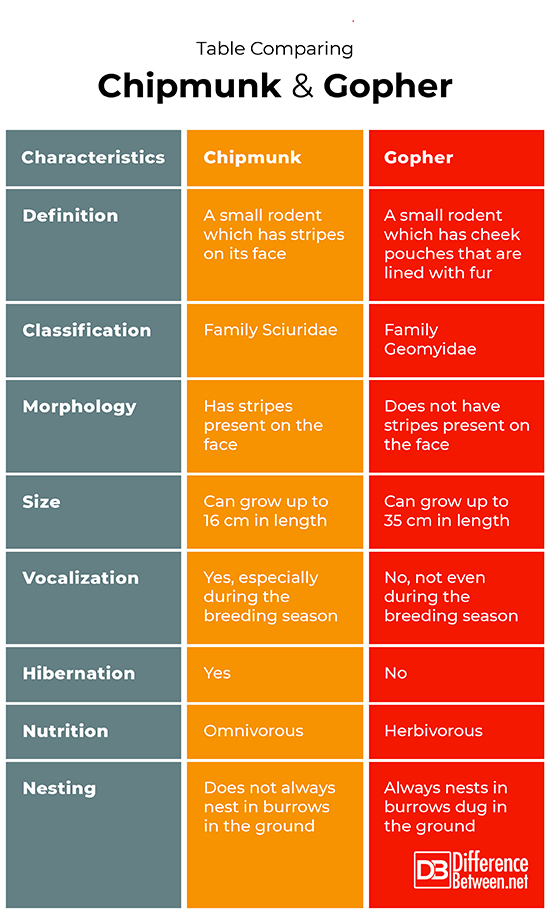Difference Between Chipmunk and Gopher
A chipmunk is a rodent that has dark stripes on the face and is in the family Sciuridae. A gopher is a rodent that has cheek pouches lined with fur and is in the family Geomyidae.
What is Chipmunk?
Definition:
A chipmunk is a type of rodent that is in the genus Tamias and can be recognized by the presence of dark stripes on the face and the long bushy tail. These animals are also in the same family, Sciuridae, as the squirrels and are therefore quite closely related.
Distribution and habitat:
Chipmunks are found in North America (most of the species) and South Central Mexico (one species). They are found living in quite a range of habitats including forests and even arid areas with shrubbery.
Morphology:
The chipmunks weigh from 1 ounce up to about 5 ounces and are thus small animals. They typically are a red-brown to a gray color with stripes on their faces. These animals have large eyes relative to the size of their body, and they have fairly large bushy tails.
Habits:
They are diurnal animals that are quite noisy, being vocal especially during the mating season. They nest in burrows that they make in the ground or else they make nests in trees or logs. They find and feed on a range of different food items which they find while foraging on the ground in the undergrowth. They are omnivorous, feeding on plant matter and a range of insects. Chipmunks are solitary animals so do not live in groups, and they do hibernate during winter. Although chipmunks may prefer foraging on the ground they can and will climb into trees in search of food when they need to. One specialized species is even able to climb up rocks in the canyon where it lives
What is Gopher?
Definition:
A gopher is a small mammal that has cheek pouches lined with fur on the outside. There is more than one genus of gophers found in the family Geomyidae.
Distribution and habitat:
Gophers are found living in the countries of Central America and North America. These animals live in a variety of habitats from grassland to coniferous forests.
Morphology:
Gophers range in size from 5 to 14 inches and have a stocky body. They do not have any black stripes on the face and are a uniform color that is usually brown or tan. They are well-adapted for digging burrows since they have claws on their paws and small ears and eyes. They have the ability to close their lips behind their front teeth which means they can use their teeth to dig without getting soil in their mouths. These little mammals have small eyes and ears compared to the overall size of their body, and they are well-adapted to digging tunnels in the soil.
Habits:
These little mammals forage for vegetation such as roots and tubers and they build long complicated burrows underground. They are also solitary individuals but unlike chipmunks, they do not hibernate and remain active even during the cold winter months. Gophers, unlike chipmunks, tend to not make much noise. They do not vocalize to the same extent even during the breeding season these animals tend to be quiet. These animals also always nest in burrows that they have dug into the ground.
Difference between Chipmunk and Gopher
Definition
A chipmunk is a small rodent which always has stripes on the face. A gopher is a small rodent which has cheek pouches that are lined with fur.
Classification
The chipmunks are classified in the family Sciuridae. The gophers are classified in the family Geomyidae.
Morphology
Chipmunks are mammals which always have stripes present on the face. Gophers are mammals which never have stripes on the face.
Size
The size of a chipmunk is quite small, not normally growing longer than 16 cm in size. The size of a gopher is larger, growing up to a length of 35 cm.
Vocalization
Chipmunks do make sounds and are quite vocal particularly if it is the breeding season. Gophers do not vocalize and are usually silent even if it is the breeding season of the animal.
Hibernation
Hibernation commonly occurs in chipmunks during the cold winter months when they enter a state of torpor. Hibernation does not occur in gophers during winter, and they remain active during this time.
Nutrition
Chipmunks feed on a range of foods including insects and plant matter and are thus herbivores. Gophers feed on only a few types of foods that are all plant material.
Nesting
Chipmunks have been known to nest in burrows in the ground, but also in trees. Gophers only nest in burrows they have constructed in the ground.
Table comparing Chipmunk and Gopher
Summary of Chipmunk Vs. Gopher
- Chipmunks and gophers are both mammals that are also classified as types of rodents.
- Both gophers and chipmunks can dig burrows in the ground, and may have similar brown coloring to their fur.
- Gophers and chipmunks also have a similar distribution with many species occurring in North America in various habitats.
- Chipmunks are smaller-sized than gophers and are omnivorous.
- Chipmunks have larger eyes compared with the gophers and they are also quite vocal.
- Gophers are herbivores that only live on the ground and underground.
- Chipmunks do sometimes forage in the trees for food and do sometimes also build their nests in the trees.
- Difference Between Rumination and Regurgitation - June 13, 2024
- Difference Between Pyelectasis and Hydronephrosis - June 4, 2024
- Difference Between Cellulitis and Erysipelas - June 1, 2024
Search DifferenceBetween.net :
Leave a Response
References :
[0]National Wildlife Federation. “Pocket gophers.” National wildlife federation, National Wildlife Federation, 2019, https://www.nwf.org/Educational-Resources/Wildlife-Guide/Mammals/Pocket-Gophers
[1]Image credit: https://commons.wikimedia.org/wiki/File:Camas_pocket_gopher_(3).JPG
[2]Image credit: https://commons.wikimedia.org/wiki/File:Chipmunk_(71669).jpg



